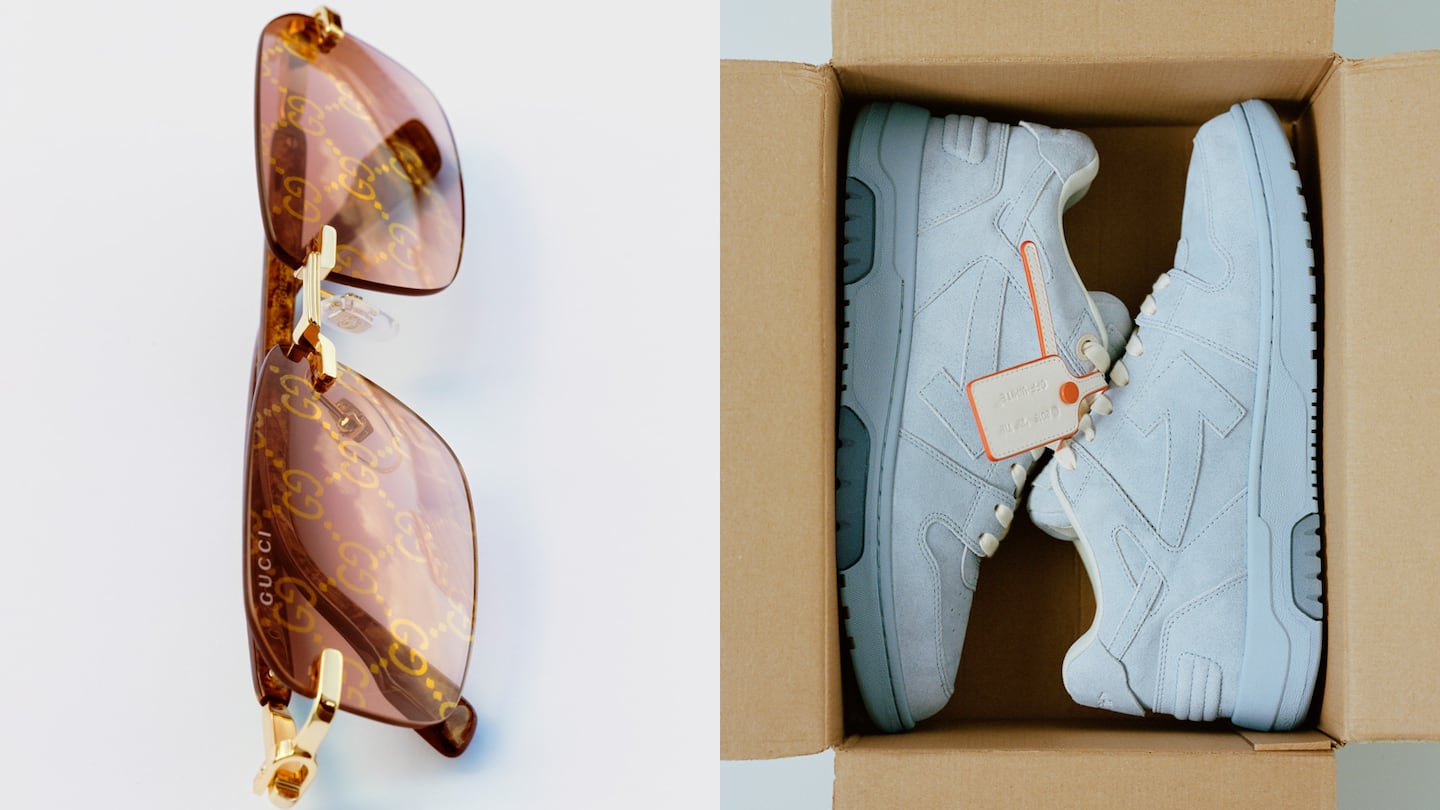
The Business of Fashion
Agenda-setting intelligence, analysis and advice for the global fashion community.

Agenda-setting intelligence, analysis and advice for the global fashion community.

Farfetch’s struggles to attract customers to its luxury marketplace deepened in the second quarter, with its own brands taking the biggest hit.
The e-tailer’s revenue dropped 1 percent in the second quarter from a year earlier to $572 million, falling well short of the average analyst forecast of $650 million. The company also lowered its sales outlook for the full year by $500 million, to $4.4 billion.
The decline was led by a more than 40 percent year-on-year slump in sales through its brand incubator platform, New Guards Group, which operates Off-White, Palm Angels and other labels, as well as the European licence for Reebok. Farfetch said that its brands saw lower orders for autumn and winter merchandise at department stores in the US and UK.
Farfetch shares plunged more than 30 percent in after-hours trading following the release of results, hitting an all-time low.
ADVERTISEMENT
Farfetch is the latest victim of a global slowdown in demand for luxury goods, which has seen companies from Kering to Burberry report weak revenue in the US and other key markets. In the US, where booming sales had lifted many high-end brands through the pandemic, high-interest rates and inflation dampen consumer spending, particularly among entry-level luxury consumers. In China, a slower-than-anticipated post-pandemic recovery is weighing on sales.
Farfetch’s sales were already in a precarious state, falling in the second half of 2022 for the first time since the brand went public in 2018. Sales rebounded slightly in the first quarter of the year, rising less than a percent year over year. But in the second quarter of the year, gross merchandise volume — a measure of goods primarily sold through its online luxury marketplace, where Farfetch takes a commission — fell less than 10 percent in the US. Sales in China also fell by a single-digit percentage point. Farfetch expects demand to remain low in the US and mainland China for the rest of the year.
There is only so much Farfetch can do about the wider economic environment. But experts say the company’s performance is also being weighed down by strategic decisions it has made in recent years.
New Guards Group hasn’t developed into the growth driver Farfetch executives predicted when they acquired it in 2019. Farfetch is also shutting down its beauty business, which launched in April 2022. At the time, chief executive José Neves said Farfetch was poised to take “a leading position in the [$70 billion] beauty space.”
Those businesses were seen by Farfetch doubters as distractions from its core luxury fashion marketplace. Now, they’ve begun to actively drag on results: Farfetch expects sales in the division containing New Guards Group to be flat in 2023, down from previous expectations that it would grow more than 30 percent year-over-year. Sales on Farfetch’s marketplace are now projected to grow 1 percent year-over-year in 2023, from an earlier projection of a 20 percent increase.
New Guards Group “is clearly under a lot of pressure,” said Tom Nikic, a senior equity research analyst of footwear and apparel at Wedbush Securities. “That was a huge component of the guidance cut today.”
The revenue miss overshadowed progress toward profitability, though there too Farfetch lowered near-term expectations. The company continued to slash marketing costs, shrink its workforce and close underperforming divisions like the beauty vertical. For the full year, the luxury e-tailer said it now expects a profit margin of 1 percent in 2023 on an adjusted basis, down from a previous outlook of 3 percent.
Farfetch acquired New Guards Group in 2019 for $675 million as part of its bid to be a leader in luxury. At the time, the plan was to build “brands of the future,” which could then be sold on the marketplace, its version of the flywheel effect that allowed companies such as Amazon and Netflix to dominate their markets.
ADVERTISEMENT
New Guards hasn’t launched any world-beating brands in the last four years. Its existing portfolio hasn’t added much to Farfetch’s top line (Palm Angels, Off-White and other New Guards brands made up 5 percent of transactions on the marketplace in the second quarter). More than two-thirds of those labels’ sales instead came from department stores, Nikic said.
“That’s one of the risks they took when they bought New Guards Group, that it looked like it’s a wholesale business,” Nikic said.
Farfetch’s plans to beef up New Guards Group’s business by signing on new partners has been slow going. The company bought the licence to Reebok’s business in Europe from Authentic Brands Group in 2022, launching the partnership in May. However, it quickly ran into transitional issues, Stephanie Phair, Farfetch’s group president and the chair of New Guards Group, said on an earnings call on Thursday.
Phair didn’t provide specifics on those challenges, but she said such hiccups means the company now expects sales from the licence to land closer to $200 million this year, versus the previous projection of up to $350 million.
As sales continue to slip, Farfetch has focused on strengthening its bottom line. It expects to reduce costs by $150 million this year.
Farfetch laid off around 800 people this year, out of a total staff of more than 6,000 in 2022, closing offices and several unprofitable retail locations. It closed the Shoreditch offshoot of Browns, its London department store, in September 2022.
On Thursday, Neves confirmed reports that Farfetch would shut down its beauty division at the end of the month; he also said the company is exploring strategic options for Violet Grey, the beauty retailer the company acquired in January 2022 for around $50 million.
The company also reduced its marketing spend by 4 percent in the second quarter. Neves said it will continue to pull back those investments in underperforming regions like the US and China for the remainder of the year.
ADVERTISEMENT
But Farfetch is sending investors mixed signals about its path to profitability. The brand reported adjusted losses before interest, taxes, depreciation and amortisation of $31 million in the second quarter, from a $24 million loss during the same period last year.
Still, Farfetch is standing firm in its forecast for adjusted EBITDA to reach $400 million by 2025.
“In spite of the unprecedented macro challenges since 2022, the decisive actions we’ve taken in light of these factors make me as confident as ever in our prospects for achieving these targets,” Neves said on the earnings call.
The luxury marketplace had hoped to take a “leading position” in the space when it launched cosmetics, skin care and hair care in April 2022 but found it harder than expected to attract shoppers.
New Guards Group co-founders Davide De Giglio and Andrea Grilli are exiting the company, owner Farfetch announced Thursday.

Malique Morris is Direct-to-Consumer Correspondent at The Business of Fashion. He is based in New York and covers digital-native brands and shifts in the online shopping industry.
The company, under siege from Arkhouse Management Co. and Brigade Capital Management, doesn’t need the activists when it can be its own, writes Andrea Felsted.
As the German sportswear giant taps surging demand for its Samba and Gazelle sneakers, it’s also taking steps to spread its bets ahead of peak interest.
A profitable, multi-trillion dollar fashion industry populated with brands that generate minimal economic and environmental waste is within our reach, argues Lawrence Lenihan.
RFID technology has made self-checkout far more efficient than traditional scanning kiosks at retailers like Zara and Uniqlo, but the industry at large hesitates to fully embrace the innovation over concerns of theft and customer engagement.